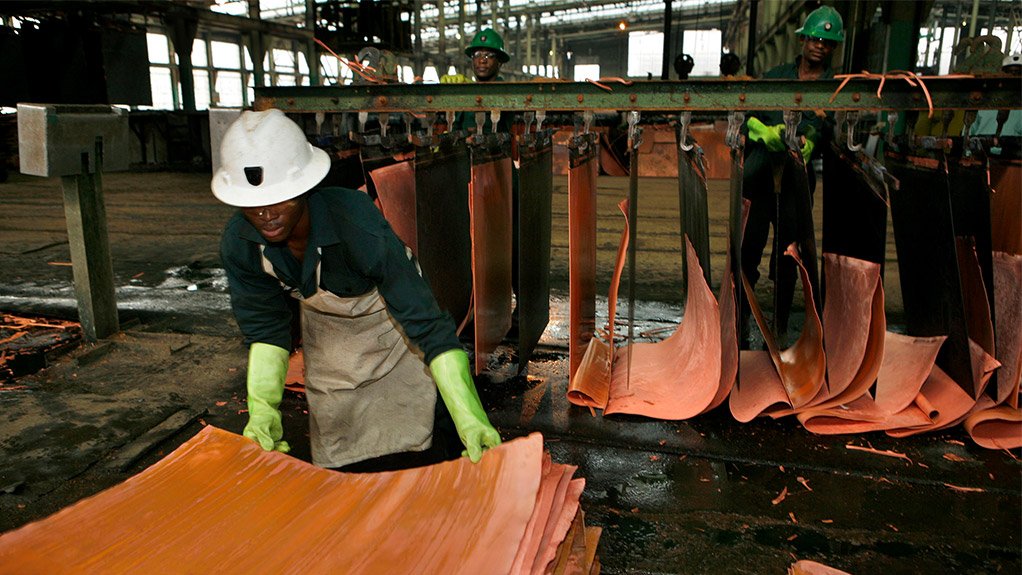Africa’s second largest red metal hotspot, Zambia, could see the exchange of dollar bonds as early as end of May to replace the 2022, 2024 and 2027 defaulted assets. Speaking at a public lecture held at the Copperbelt University organised by the USAID, Secretary to the Treasury Felix Nkulukusa informed the audience that all things constant, the Southern African nation could see new dollar bonds trading as as early as end of May.
“Of the $13.34 billion, we owe bilateral creditors an estimate of $6.3 billion (17 of them), about $3.84 billion to euro bondholders and other private creditors an amount of $3.2 billion. Where are we with each one of these? With the official creditors, we have concluded, and as for the bondholders, we reached an agreement in March and are now negotiating to sign. If all goes well, by the end of this month, we will have signed the documents and will start servicing the debt (dollar). As for the other creditors, the $3.2 billion, we have categorised them with the $1.8 billion (accounting for 18% of the total debt) of which is owed to Chinese commercial banks, namely Bank of China, China Development Bank, Industrial Commercial Bank of China and Polytechnic- we are making good progress. All things being equal, we can reach an agreement before the end of summer. While the other ($1.2 billion), we think there is more work to be done, and we should be able to conclude by the end of the year,” Secretary to the Treasury Felix Nkulukusa said.
Zambia earlier in March, reached an agreement with its eurobond holders steering committee over three yards of outstanding dollar bonds that will see the restructure of these fixed income assets into $1.75 billion maturing 2053 and $2.0 billion for maturity 2033 under two scenarios namely base and upside case respectively. This development met not only the World Bank debt sustainability analysis but was nodded by both the Official Creditors Committee and the International Monetary Fund for comparability of treatment. The latter condition fell short in the initial agreement in November 2023, resulting in extension of talks with creditors to satisfy the requirement under the G20 common framework.
Completion of the bilateral $6.3 billion and dollar bond $3.04 billion portion accounts for 77% of the total obligation stock, leaving 23% to the tune of $3.4 billion of non bondholder private debt pending, the bulk of which is owed to the Chinese. Markets lie in wait surrounding when exactly rating agencies will re-evaluate the copper producers’ sovereign foreign currency long term issuer rating, which is still in default.
Responding to the Treasury Secretary’s presentation, Country Partner for PricewaterhouseCoopers Andrew Chibuye cited a positive outlook and sentiment on the restructure progress but revealed that Zambia will have to work twice as hard to grow the economy and service debt, which is a sunk cost. International Monetary Fund Resident Representative Eric Lautier singled out resilience in the Zambian economy for 2023, surpassing the lenders expectations given the many headwinds. Lautier emphasised the realisation that the private sector should drive growth in supporting Zambia’s fiscal rebound.
ZANACO Chief Risk Officer Mutisunge Zulu linked the restructure progress to the current cost of capital, whose prospects should brighten if the credit rating agencies do upgrade the copper producers sovereign outlook, which is currently default. This he said, would narrow sovereign premiums to address capital pricing that has hampered private sector financing. Zulu cited the current term structure of interest rates as a reflection of government borrowing that should decongest the money markets when external credit lines re-open for the red metal producer. Civil Society for Debt Alliance Coordinator Peter Mumba lauded the state for the fiscal efforts but emphasised the urgency to grow the economy given the base case and upside scenarios for dollar bond restructure, citing no downside scenario, hence the need to take this seriously.
The copper producer grapples with a weakening currency flirting with all time lows, rising inflation and above all climate induced drought effects that has hampered power generation and threatened food security. Petroleum prices remain persistently high taking a negative cue from a Kwacha losing streak that could see the Bank of Zambia aggressively hike rates in next weeks rate decision meeting.
The Kwacha Arbitrageur

